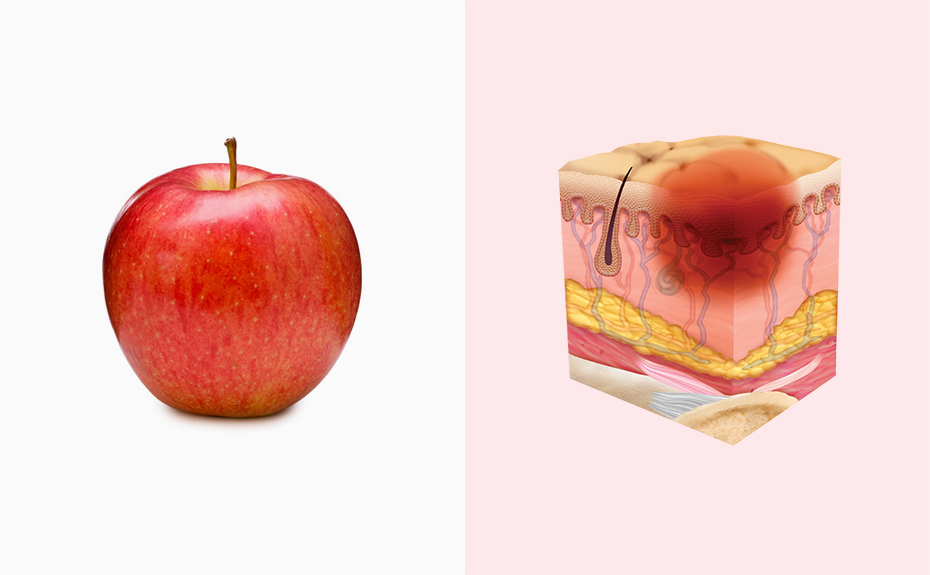Medline’s Apple P.I.E. concept is a recipe for success

Pressure Injury Explanation Tool uses an apple to demonstrate the stages of pressure injuries
By Medline Newsroom Staff | March 14, 2022
What does an apple and the stages of pressure injury have in common? Turns out, a lot more than many would think. In honor of Pi Day on March 14, Patty Turner, BSN, RN, CWOCN, CWS, director of clinical services at Medline, presented her patented Apple P.I.E. (Pressure Injury Explanation) concept to healthcare providers.
Over 2.5 million patients are effected by hospital-acquired pressure injuries (HAPI) each year, according to The Agency for Healthcare Research and Quality, with the number increasing since the onset of COVID-19. Educating staff on the four contributing factors of pressure injuries – prolonged pressure, friction, shear and moisture – can help reduce HAPIs and patient readmission rates, especially if the information is presented in a way that is easily digestible.
“Frontline staff nurses are stretched more than ever, yet their assessments of their patient’s condition remains consistently important,” said Turner. “When it comes to pressure injuries, accurate staging is key to identifying the right treatment and intervention for the right condition of the wound. The Apple P.I.E. tool uses a common object, like a red apple, and compares it to the stages of pressure injuries, so that staff can easily and better understand the staging system and apply it to their assessment of the pressure injury”
The Apple P.I.E. concept uses an apple, from unblemished to completely eaten, to demonstrate each stage of a pressure injury:
- Non-eaten apple (Stage 1): Intact skin with a localized area non-blanchable erythema, which appears different in darkly pigmented skin.
- Partially-peeled apple (Stage 2): Partial-thicken loss of skin with exposed dermis. The wound bed is viable, pink or red, moist and may show as an intact or ruptured serum-filled blister.
- Big bite out of apple (Stage 3): Full-thickness loss of skin, in which the fat is visible in the ulcer and granulation tissue and epibole (rolled wound edges) are present.
- Completely eaten, just the core of the apple remains (Stage 4): Full-thickness skin and tissue loss with directly palpable fascia, muscle, tendon, ligament, cartilage or bone in the ulcer.
In addition, Turner classifies two additional stages using caramel on the apple, such as:
- Caramel covers entire apple (Unstageable): Full-thickness skin and tissue loss, in which the extent of tissue damage within the ulcer cannot be confirmed because it is obscured by slough or eschar.
- Caramel smudge on the apple (Deep Tissue Pressure Injury): Intact or non-intact skin with localized area of persistence, non-blanchable deep red, maroon or purple discoloration, or epidermal separation that reveals a dark wound bed or blood-filled blister.
“Creating a holistic training program that focuses on both prevention and treatment can help empower healthcare workers and equip them with the right resources to build a culture of safety,” said Turner.
Learn more about Medline’s skin health training and education solutions
Medline Newsroom Staff
Medline Newsroom Staff
Medline's newsroom staff researches and reports on the latest news and trends in healthcare.

